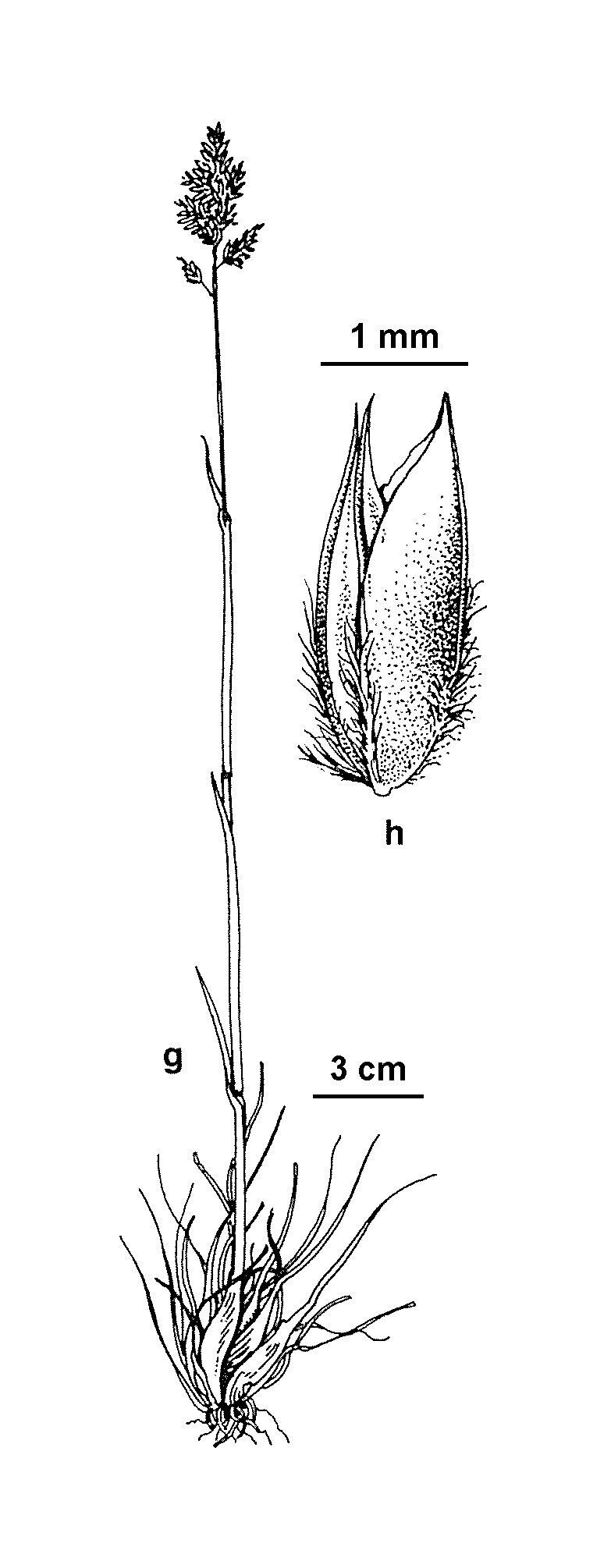Poa bulbosa var. bulbosa
Bulbous Meadow-grassTufted perennial, culms erect to c. 40 cm high, basal stems developing bulbous swellings; leaves glabrous, blade flat, folded or inrolled, keeled and pointed at apex, to 10 cm long and 2.5 mm wide; ligule obtuse to acute, 1–4 mm long. Inflorescence a compact narrowly ovoid panicle, to c. 6 cm long and 2 cm wide. Spikelets often subsessile, 3–6-flowered, 3–6 mm long; glumes subequal, 1.8–3 mm long; lemma 2.3–3.5 mm long, mostly green but conspicuously bordered by purplish and golden bands, the keel and margins conspicuously fringed, lateral nerves glabrous or weakly fringed; web well-developed. Flowers Sep.–Oct.
LoM, MuM, Wim, VVP, VRiv, GipP, OtP, Gold, CVU, GGr, NIS, WPro. Also naturalised in WA, SA, NSW, ACT, Tas. Indigenous to the Mediterranean region and near-coastal western Europe. In Victoria largely confined to sandy soils of the north-west, but occasional as a drought-tolerant component of pastures elsewhere, e.g. Camperdown, Puckapunyal, Benalla and Mansfield areas, also noted along Wellington River north of Licola, and margins of tracks in Wilsons Promontory.
Walsh, N.G. (1994). Poaceae. In: Walsh, N.G.; Entwisle, T.J., Flora of Victoria Vol. 2, Ferns and Allied Plants, Conifers and Monocotyledons, pp. 356–627. Inkata Press, Melbourne.
 Spinning
Spinning
